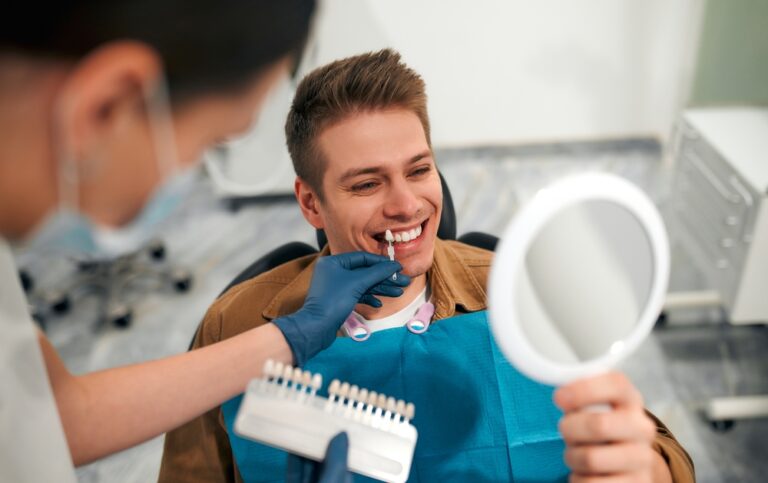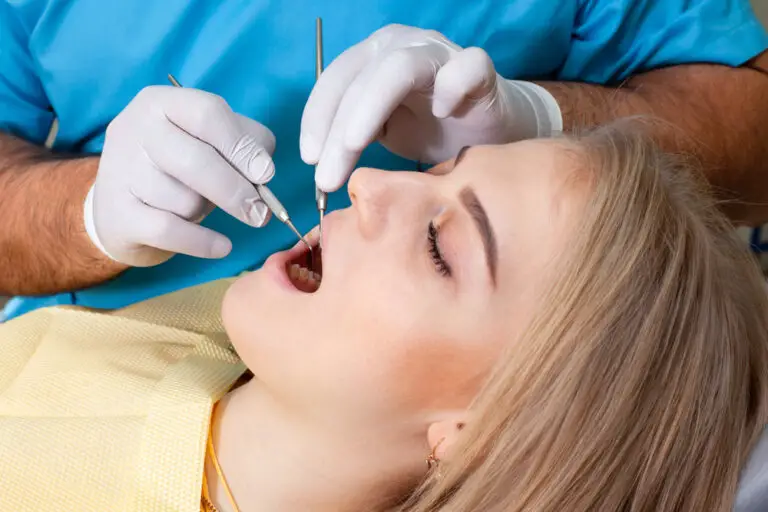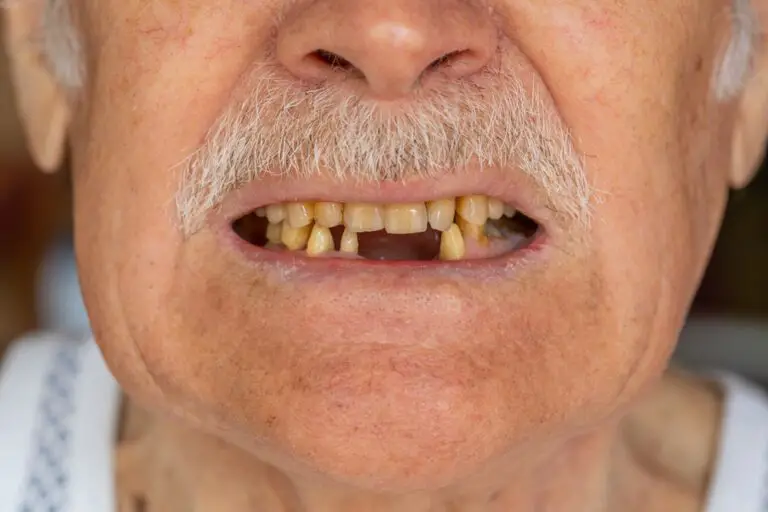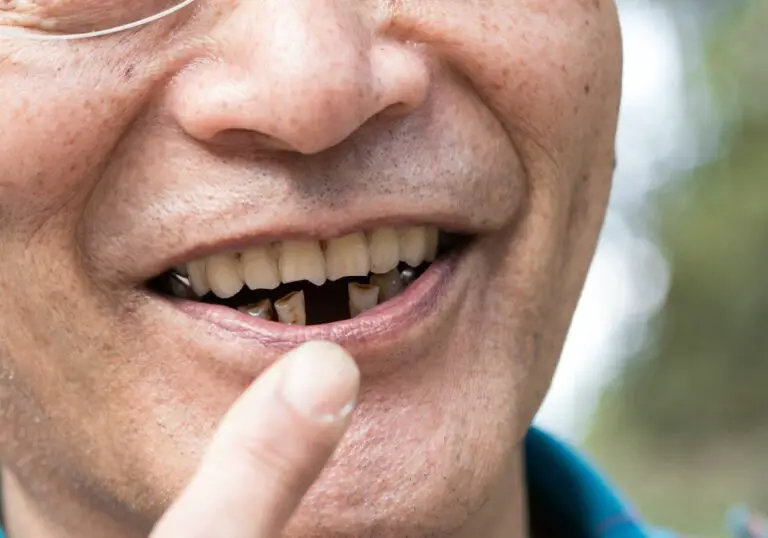You might have heard about the problems associated with using anesthesia for cleaning a dog’s teeth and as a dog parent, we understand that it’s only normal for you to worry for your dog’s safety.
While it is estimated that every year, only about 1 in 2000 dogs die during the tooth cleaning process while under anesthesia. Is this simple tooth-cleaning procedure worth the risks associated with the anesthesia used?
Well, Veterinarians usually opt for anesthesia because it makes the dog immobile, making it easier to thoroughly clean the dog’s teeth.
Here, we answer questions on tooth cleaning for dogs and recommend best practices to avoid losing your canine friend during tooth cleaning.
Risks Associated With Dog Tooth Cleaning
As with many other procedures, there are risks associated with dental cleaning, and this is due to the anesthesia. You always risk organ failure and even death, especially if your dog has an underlying health condition.
This is why we advise that you take your dog for a physical exam before a procedure so the vet can conduct the necessary exam and dental X-rays before your dog goes under.
A dog with a health condition can still go through the dental care procedure. It would only require adjustment for the anesthesia, so you must visit a board–certified veterinary with a team to ensure your dog gets the best dental care.
Although there are risks with this procedure, it remains the most effective method for cleaning your dog’s tooth. Additionally, your dog’s dying risk is lower than you would expect.
On average, 1 in 2000 healthy dogs may die under general anesthesia, which is a relatively safe ratio, considering the risk of dental disease for dogs that do not go for tooth cleaning.
Alternatives to Using Anesthetic for Dog Teeth Cleaning
If you’re scared of losing your dog to the anesthetic procedure, this section is expertly curated for you.
In addition to the possible risk of death, another reason to consider the alternatives to this section is the cost of the anesthetic procedure.
Certain factors like the differences in localities and the severity of your dog’s dental disease can affect the pricing of the procedure. Sometimes, insurance for pets rarely covers a routine cleaning, not to say the procedure.
Additionally, discounts only help a little because even after the percentage is taken out, a huge chunk of money remains to be paid.
On average, dental care for dogs costs around $500-$1,000 and this does not include the price of other services like dental radiographs, which will add almost $200 more to the initial price.
These alternatives involve caring for your dog’s oral health at home to avoid tartar buildup or other bacteria.
Let’s explore these risk-free and cost-effective alternatives.
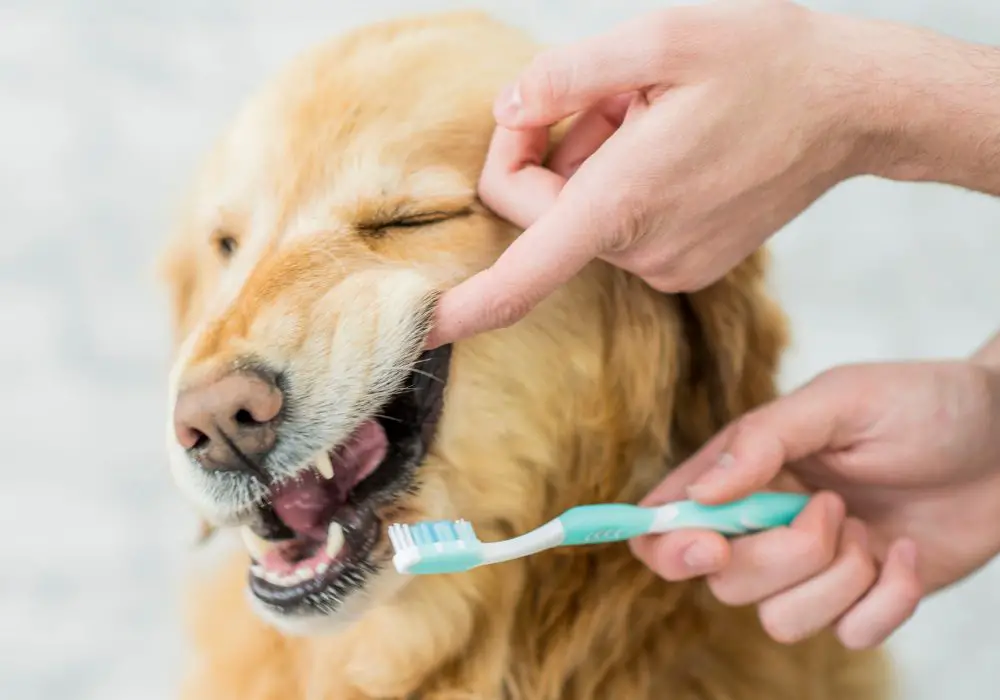
1. Brushing Daily
This alternative is quite similar to the way you brush your teeth daily. We recommend adopting this method to prevent periodontal disease.
Your chosen dog toothbrush should have a small head that can contain your dog’s mouth. Also, ensure the bristles are soft for your dog’s comfort.
Once you have the toothbrush, you can apply dog-friendly toothpaste and softly brush your dog’s teeth while cornering the parts most likely to have a tartar buildup.
2. Finger Brushing
Finger Brushing is an alternative to toothbrushes, especially if your dog finds toothbrushes uncomfortable. Finger brushes are rubbery, slippery brushes you can wear on your finger and use to clean your dog’s teeth. Once you have one, choose a pet-friendly toothpaste to help the brushing move easier.
3. Water Additives
Additives are an easier way to control your dog’s dental program. Although this is not a complete replacement for brushing and other procedures, this anesthesia-free option offers a fast and effective method to prevent periodontal diseases.
This works through the active ingredients in the water additives that help to clear bacteria and work toward a cleaner mouth for dogs.
4. Dental Chews and Treats
Do you know that treating your dog is a great way to trick them into cleaning their teeth? Providing dogs with nutritional chews helps dogs have not only a balanced treat but also a way for them to pick their teeth while chewing, which helps them clean their teeth.
You may also consider investing in chew toys to help your dog pick their tooth more while cleaning it in the process.
Signs that Show Your Dog Needs Tooth Cleaning
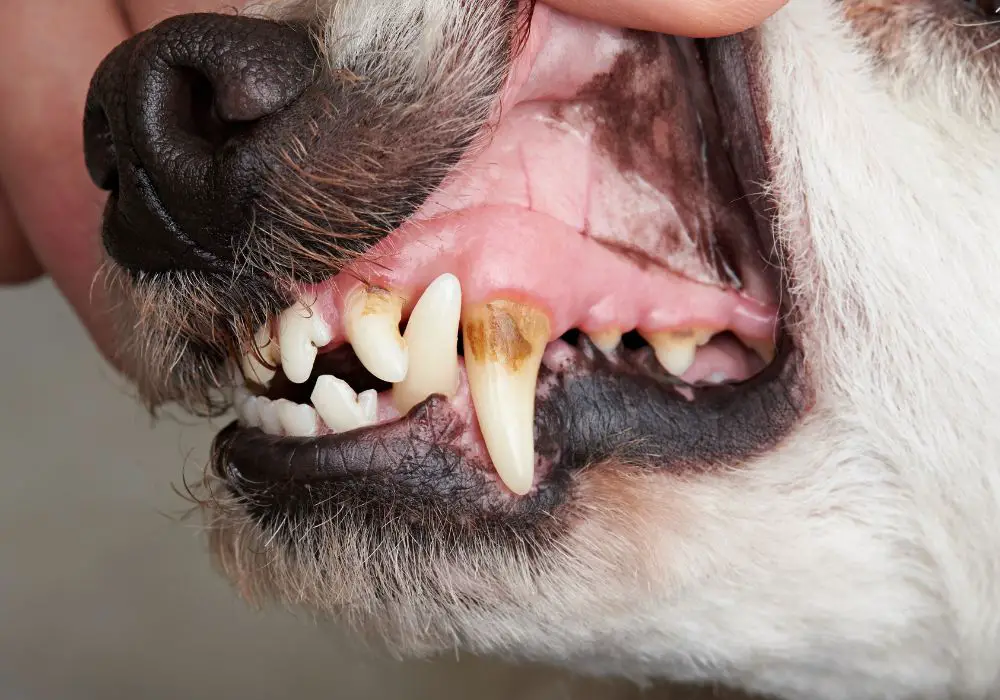
While we recommend that you schedule your dog for routine cleanings occasionally with a board-certified veterinary dentist, here are some signs that will help you know that your dog needs to undergo a professional tooth cleaning procedure.
1. Bad Breath
This is a common tell, especially for those parents that bond through licking. If you notice a foul smell coming from your dog’s mouth, you should immediately schedule an appointment with a veterinary dentist for cleaning.
2. Dental Discoloration
Dental Discoloration is an obvious sign of a dying or dead tooth. In most cases, the tooth affected must be extracted, especially when it can no longer be saved using root canal therapy. You must immediately book a session with your veterinary dentist when you notice such discolorations or tooth decay.
3. Missing Tooth
You should never let it get to this point before you take your dog to the vet for dental cleaning. A dog’s tooth falling off means it has passed through all the possible stages for you to notice and if nothing is done, the tooth decays completely and falls off.
Immediately you notice that your dog is missing a tooth, you should rush that dog to the vet for a procedure.
4. Difficulty Chewing
Whenever dogs do not eat meals their owner gives them, it is only sometimes an appetite problem. Sometimes, it could be that your dog has difficulty chewing the meal because of a tooth problem.
If you notice that your dog has difficulties chewing, this is a clear sign of a dental disease and you must see a vet.
N.B: If you do not pay attention to these symptoms on your dog’s dental health, you will risk the chances of bacteria and infection through diseased gums and broken teeth that may travel through the bloodstream and harm organs like the kidney and liver
Factors That Determine the Cost of a Dog’s Tooth Cleaning
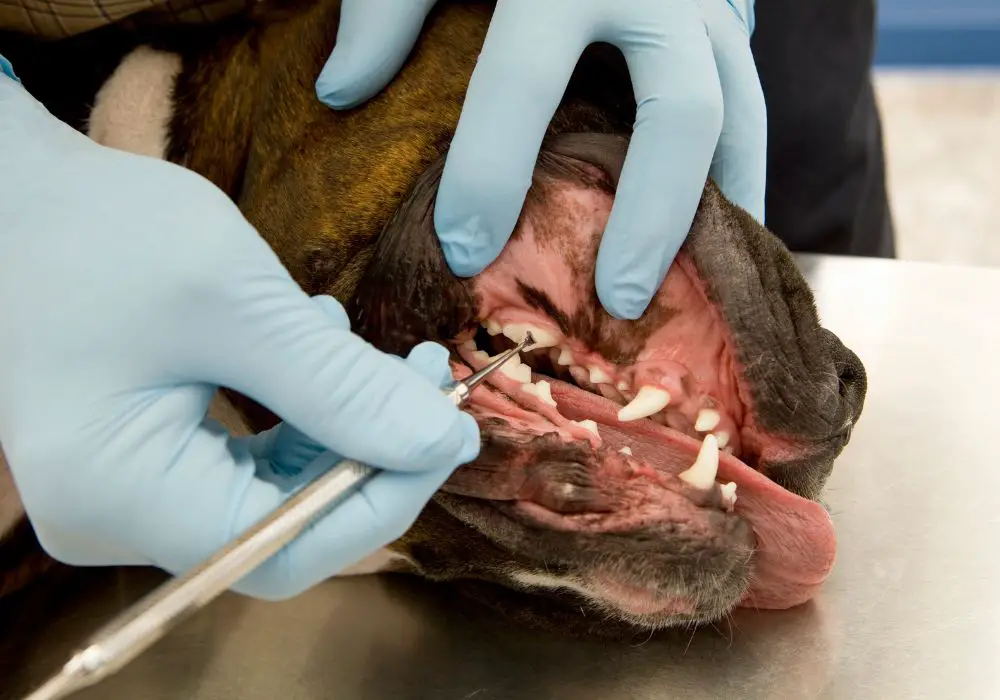
The anesthesia method of cleaning is no doubt more expensive than basic tooth cleaning. An anesthesia-free cleaning ranges from $100-$300 while the anesthetic cleaning varies between $500-$1,000.
This section discusses the various factors that determine the differences in these prices.
1. Location
The location of your veterinary clinic will affect the pricing of your dog’s tooth cleaning services. For instance, if your vet’s clinic is located in an area with a higher cost for services, this will affect the final price of your procedure.
2. Blood Work
A dog cleaning procedure is not always direct. Most times, it requires a series of blood work and physical examinations before the major procedure and these factors will affect the price of the procedure.
Some vets may choose to charge you separately for the pre-work job but most of the time, vets prefer to charge you at once so this will definitely affect your final bill at the end of a procedure.
3. Possible Tooth Extraction
This is a common reason for a sudden hike in the price of a dog’s dental cleaning. It is more common among dogs whose pet owners ignored the signs to clean their dog’s tooth and waited for tooth decay or a periodontal disease like gingivitis before seeing a vet.
During the procedure, if your vet realizes that a tooth is not worth saving, the tooth cleaning process becomes tooth extraction which will surely determine the pricing for the tooth cleaning.
4. Aftercare
Dogs are different; some respond to treatment quickly while others take their time to heal. so, dogs that recover faster will not have too much added to their teeth cleaning bill while others will wait for a while before recovery.
This will add to the owner’s dental bill because until the dog is well enough, your dog will need to continue treatment.
5. Possible Boarding
Depending on how your dog responds to the dog cleaning procedure, you may need to pay extra for your dog to remain in the clinic. This is so that the vet team will be able to monitor your dog’s recovery and act fast in case of emergencies.
Final Thoughts
Dogs are always at risk of periodontal diseases, so paying attention to their oral hygiene is necessary. You must know that the best procedure for tooth cleaning remains the anesthetic procedure.
This is because the only procedure that allows for thorough cleaning of your dog’s tooth is the anesthetic procedure because this way, your dog is stable enough for the vet to go around the gum line and other parts.


